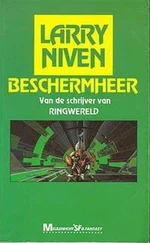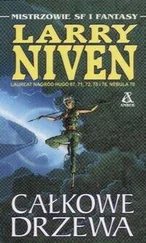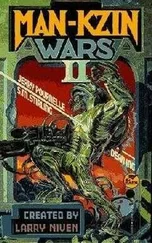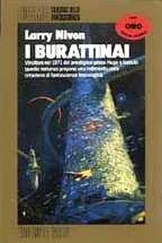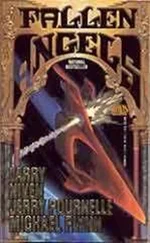Larry Kahaner - AK-47
Здесь есть возможность читать онлайн «Larry Kahaner - AK-47» весь текст электронной книги совершенно бесплатно (целиком полную версию без сокращений). В некоторых случаях можно слушать аудио, скачать через торрент в формате fb2 и присутствует краткое содержание. Город: Hoboken, Год выпуска: 2007, ISBN: 2007, Издательство: John Wiley & Sons, Inc., Жанр: История, military_history, на английском языке. Описание произведения, (предисловие) а так же отзывы посетителей доступны на портале библиотеки ЛибКат.
- Название:AK-47
- Автор:
- Издательство:John Wiley & Sons, Inc.
- Жанр:
- Год:2007
- Город:Hoboken
- ISBN:9780470315668
- Рейтинг книги:3 / 5. Голосов: 1
-
Избранное:Добавить в избранное
- Отзывы:
-
Ваша оценка:
- 60
- 1
- 2
- 3
- 4
- 5
AK-47: краткое содержание, описание и аннотация
Предлагаем к чтению аннотацию, описание, краткое содержание или предисловие (зависит от того, что написал сам автор книги «AK-47»). Если вы не нашли необходимую информацию о книге — напишите в комментариях, мы постараемся отыскать её.
AK-47 — читать онлайн бесплатно полную книгу (весь текст) целиком
Ниже представлен текст книги, разбитый по страницам. Система сохранения места последней прочитанной страницы, позволяет с удобством читать онлайн бесплатно книгу «AK-47», без необходимости каждый раз заново искать на чём Вы остановились. Поставьте закладку, и сможете в любой момент перейти на страницу, на которой закончили чтение.
Интервал:
Закладка:
Unbeknownst to Kalashnikov and Soviet arms designers, the Germans were already working on just such a weapon, and the key to its success was not the gun but a new kind of ammunition.
In many instances, the arcane and minute design elements of ammunition are much more complex and controversial among ballistic engineers than the weapons that fire them. Changing a bullet’s weight by a few grams, altering its shape from sharp-pointed to blunt, or using a few grains more or less of powder in the cartridge case can offer a soldier a vastly different fighting tool irrespective of the gun.
Ammunition is composed of several parts. The first is the bullet, the actual projectile. Bullets are usually made from a mixture of lead and tin, and most military bullets are jacketed with copper or steel to make them harder, the so-called full metal jacket round.
The bullet sits atop and within the cartridge case, held tightly in place by a crimp in the case. Brass is the metal of choice for the case because it is soft enough to crimp yet hard enough to keep its shape during the rapid firing and ejection process. The case actually stretches slightly as soon as it is subjected to pressure, sealing the breech, a process known as obturation. It retracts as soon as the pressure drops. Brass is also lightweight for its strength. Inside the case sits powder that ignites when the firing pin in the gun strikes the primer bottom at the center of the case—much like hitting an old-style match head—which then lights the powder. When the powder ignites, it propels the bullet out of the cartridge and through the barrel at supersonic speed.
German armament engineers in the 1930s began experimenting with an intermediate cartridge (often the word “cartridge” is used to signify the entire round—bullet plus cartridge case), sized between a pistol round and a rifle round, and they came up with a compromise in the PP Kurz (kurz means “short”), which was “7.92 × 33”—the bullet was 7.92 millimeters in diameter and the case holding it was 33 millimeters long.
Sometimes, ammunition is measured in America and Britain (which continue to resist the metric system) in inches instead of millimeters, and referred to as calibers. A caliber is one inch or 25.4 millimeters. To further complicate the nomenclature, caliber sizes are not always exact; a so-called .38 Police Special bullet is actually .357 inches, and a .44 Magnum of Dirty Harry fame is really .429 inches in diameter.
The new German round, thinner than a rifle round and thicker than a pistol round, was a vast departure from previous submachine-gun ammunition and opened up a world of new possibilities in rapid-firing guns that were light enough for an infantryman to carry, along with a large amount of ammunition, and easy to keep on target. As a bonus to designers, the less powerful rounds offered decreased wear and tear on rifle barrels and other components.
While the Soviets were still working on perfecting a submachine gun, German designers Hugo Schmeisser and Carl Walther, whose company produced James Bond’s pistol of choice, the Walther PPK, were busy building competing prototype rifles employing the intermediate Kurz round. By 1942, they were testing the Maschinenkarabiner, or Mkb for short. As the name implied, it was a hybrid of a machine gun and a carbine, but Hitler did not like this idea at all. He was wedded to submachine guns despite their shortcomings, so in an effort to circumvent him the designers and their military supporters decided to rename it Maschinenpistole (MP), or submachine gun, which was on the Führer’s “approved list” of weapons.
The Mkb42, or MP42, was field-tested against Soviet troops in the battle of Cholm in 1942. Cut off from conventional supply routes, a German army corps found itself encircled by the Soviets in Cholm on the Lovat River south of Leningrad. From February to April, German troops died daily from malnutrition and cold, until a cache of prototype Mkbs was airdropped. Using these new weapons, the Germans were able to blast their way through the Soviet lines and escape.
It is not recorded if the Soviets were able to capture one of these breakthrough weapons, but they were impressed by its performance, and so was Hitler, who finally admitted that these rifles outperformed submachine guns. Two years later, in 1944, in a face-saving move, he dramatically renamed the Mkb the Sturmgewehr, or assault rifle, offering the world a new class of automatic weapon and a name that endured. Had World War II continued, all German soldiers would have received this weapon as regular issue.
While this was transpiring, the Soviets had been working on their own medium-sized cartridge, the 7.62 × 39, also known as the M43 for the year it was approved by Josef Stalin, who, unlike Hitler, saw the need for a new type of ammunition and weapon to fire it. In the quest for a rifle to fire the new round, the government established a contest among designers. A who’s who of venerable Soviet designers entered, including Alexei Sudayev and Sergei Simonov, people virtually unknown in the West but who were household names among Soviets, on a par with legends Samuel Colt and Smith & Wesson. There was also an unknown designer who humbly threw his hat in the ring, Mikhail Kalashnikov, now only in his twenties.
By the time Kalashnikov began work on a rifle to use the new cartridge, the war was winding down and his dream of being the one to produce a weapon to drive out the Germans was dashed. In addition, Sudayev, who won the contest, designed an automatic rifle with too many production shortcomings to be considered practical.
MANY MILITARY HISTORIANS miss the cruel irony of the automatic rifle story, in which the Soviets were their own worst enemy. Although the German Sturmgewehr was considered the world’s first assault rifle, the concept had inadvertently been invented in Russia in 1916 by Vladimir Federov, an arms maker for the tsar. Federov’s Avtomat (“automatic”) employed an intermediate round favored by Japanese soldiers, whose smaller frames preferred the recoil of the less powerful ammunition. Federov’s genius was to place the 6.5 × 50.5mm Arisaka round in his automatic rifle, but he did so because the commonly used larger rounds were too hard on the Avtomats and required heavier bolts, pistons, and other components. He and his contemporaries knew little of the battlefield imperatives that would later necessitate the intermediate round. He was simply trying to make his guns last longer.
Federov’s brilliance was lost with the Russian Revolution of 1917, when his political beliefs landed him on the wrong side of the changing government. He even spent time in prison. More importantly, the officers in the field did not understand that this new weapon and round combination was the wave of the future. They still clung to the idea of a more powerful, longer-range ammunition and the mistaken belief that soldiers would always fight battles at long range. As the new regime cleaned house, it swept his work away and the Soviets went back to the old, larger round, which remained standard until 1943. Indeed, some arms historians argue that the Germans were familiar with Federov’s early work and built their Kurz cartridge on his experience. Whatever the true story, the Soviets were now playing technological catch-up. But the ending of the war afforded them the luxury of more time. With the Third Reich beaten by the Allies and the U.S. military showing no interest in assault rifles, the postwar Soviets had a clear road ahead.
The U.S. military was oblivious to the weapons revolution playing out in Europe. As World War II was winding down, American ordnance experts sent back samples of the German Sturmgewehr for study by the Springfield Armory that produced the M1 Garand semiautomatic rifle, considered one of the finest weapons of its type. Unlike an automatic, which sprays bullets with one continuous pull of the trigger, the semiautomatic requires one trigger squeeze per round. Although U.S. forces had heard about the power of Germany’s light automatic weapon, and now had them under the microscope, the upper echelon refused to acknowledge the innovation. Like the early Soviets, they believed in the higher-powered round shot long distances by a soldier/marksman. They continued to believe that the key to war was strategy, training, and high-tech weaponry. When they studied the Sturmgewehr, they could not get past the fact that these weapons were machine-stamped and welded, which in the United States was considered a second-class production method compared to machine milling and forging. They did not understand that Germany had taken stamping and welding to a high art, and that the weapons were lighter and just as rugged as guns with machined and forged parts. Armory personnel dismissed the weapons as flimsy and cheap-looking.
Читать дальшеИнтервал:
Закладка:
Похожие книги на «AK-47»
Представляем Вашему вниманию похожие книги на «AK-47» списком для выбора. Мы отобрали схожую по названию и смыслу литературу в надежде предоставить читателям больше вариантов отыскать новые, интересные, ещё непрочитанные произведения.
Обсуждение, отзывы о книге «AK-47» и просто собственные мнения читателей. Оставьте ваши комментарии, напишите, что Вы думаете о произведении, его смысле или главных героях. Укажите что конкретно понравилось, а что нет, и почему Вы так считаете.

